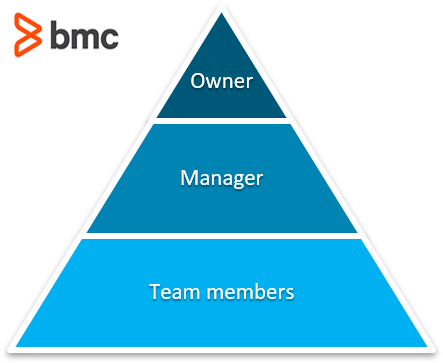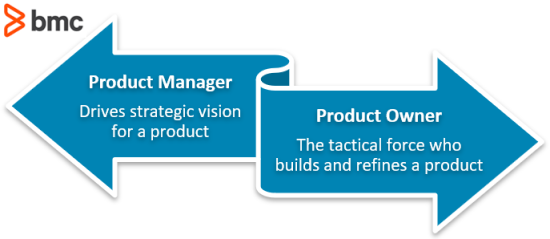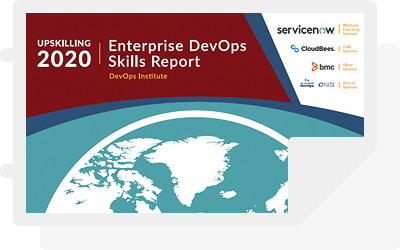Agile software development is creating new kinds of positions in companies. Roles like evangelists and scrum masters and product owners and product managers are open for hire on company websites around the world.
Product Managers and Product Owners are two of these roles. Both roles seem to be high-level jobs, come with an attractive salary, and sometimes require little technical skills. All they require is a degree, some knowledge of the industry, and an ability to talk and listen effectively. With it, you get a job that avoids monotony, carries prestige, and will often let you work remotely. Sounds like a great gig.
So, is there any difference between Product Managers and Product Owners?
Owner, manager: ambiguous terms
The greatest confusion between a Product Manager and a Product Owner arises from the ambiguity of the term Owner. At first glance, it’s poorly named. On the typical hierarchy of roles, an Owner is higher than a Manager.

But the agile framework tries to break down these traditional hierarchies. Communication acts as bits of information transmitted between nodes on a network. Managers report to multiple parties, Owners report to multiple parties, and Customers report to multiple parties.
It must be asked, “The owner of what?” The Product Owner is not the CEO or the inventor-type. The Product Owner is not the engineer. With regards to agile development, the Product Owner is akin to the Customer. They are the ones who have purchased, thus own, the product: Product Owner.
From a managerial perspective, the term “Owner” in Product Owner, could get its name from that long-sought management ideal of giving team members ownership over their role. So, the managers gave them the pet name “Owner”, as if to instill ownership into the person’s role. It’s like giving the Boy Scout troop leader the role, “General”. The parent chaperone still makes the big decisions, but at least the child can pretend they’re an owner.

A general distinction between PMs and POs:
- The Product Manager drives the strategic vision for the product.
- The Product Owner is the tactical ground force looking to build and refine the product.
Product Owner is Scrum-dependent
The true difference between a Product Owner and a Product Manager, though, is that Product Owner is a role within a Scrum team. Like Product Management consultant Melissa Perri said, “Product Owner is a role you play on a Scrum team. Product Manager is the job.” Product Managers can exist anywhere, anytime. Product Owners, however, rely on the Scrum Framework.
Scrum is an Agile Development system that:
- Focuses on goals, small and large
- Takes place in 1- or 2-week-long product development periods, known as sprints
- Often uses Kanban boards to create and organize tasks
Because Scrum is a specific system, it has particular roles. The roles on the team are:
- Product Owners
- Scrum Masters
- Developers
In the Agile mindset, the Scrum team is meant to be self-organized and all team members are responsible for getting the work done.
When the Scrum layout does not exist, the Product Owner’s identity fades away. The roles of writing user stories and prioritizing developer tasks may not occur explicitly in other jobs, or those responsibilities might be absorbed in an over-arching Product Management role or by Assistant PMs.
Product Manager: jobs, skills, salary
The scope of a Product Management role varies depending on the stage of the company and the maturity of the Product Management team. At its most mature, the PM is primarily responsible for:
- Talking to users
- Organizing strategic path of product
- Creating product development timelines
- Communicating between engineering and business teams
When a product is in its initial stages, or the team is in its infancy, the Product Management team can be found wearing mile-high hats, participating in everything from UX Designing, backend engineering, and design budgeting, along with all the customer communications that are required.
PMs tend to make good money. In the U.S., the average annual salary for a Product Manager is about $109,000, according to Glassdoor.
Product Owner: jobs, skills, salary
Where a Product Manager might wear a number of hats, in Scrum, the field of responsibilities of a Product Owner becomes very narrow. Like a second basemen on a baseball field, the Product Owner has a very specific piece of land to cover with very specific people to speak to.
Scrum utilizes a system of tasks and keeps score, often with the help of a product management tool like the Kanban chart or, possibly, a simple Excel file. Throughout the sprint, engineers will claim tasks. The role of the Product Owner is to organize and prioritize the tasks for the engineers. If there are no tasks, the engineers wait around for the ball to get hit to them. If the tasks aren’t prioritized, the engineers develop features that aren’t crucial to the product’s mission.
Generally, the engineers, like the computer systems humankind develops, will build whatever task is on that task list, regardless of its direct impact on the end product. Thus, it is very important for the PO to maintain a good list, or those engineers might end up building a whole different product than what the company claims to sell.
Product Owners must do several things to maintain the list. The PO responsibilities are:
- Translate PMs’ vision to actionable tasks
- Determine day-to-day tasks
- Write user stories for development team
- Prioritize work in the backlog
Like PMs, Product Owners earn a solid salary. Glassdoor’s research indicates an average U.S. salary of just under $95,000 for POs.
PM and PO certifications
There are ways to set yourself apart from the crowd by getting a certification in one of these areas, Product Manager or Product Owner. These certifications indicate your specialty and experience, so you can often expect to command a higher salary.
- The Product Manager can take one of a number of tests for certification.
- The larger umbrella of Agile Development certifications will teach both PM and PO roles and responsibilities. Among them, the PMI-ACP is the top certification that acts as a catch-all for agile development roles.
Product Managers & Owners: The outlook is good
With companies across all sectors and geographies adopting agile product development, it’s likely that both Product Owners and Product Managers will be around for a long while. As technology continues its expansion, more people will be needed to explain cutting edge concepts and applications to the business. Great PMs and POs contribute to companies’ ongoing innovation efforts in order to stay ahead of competition.
Additional resources
For more on workplace trends and roles, browse our BMC Business of IT Blog or check out these articles:







